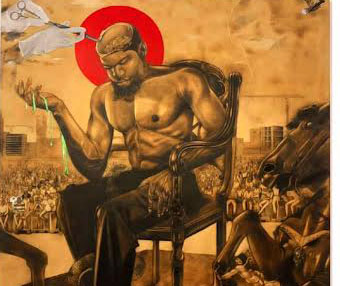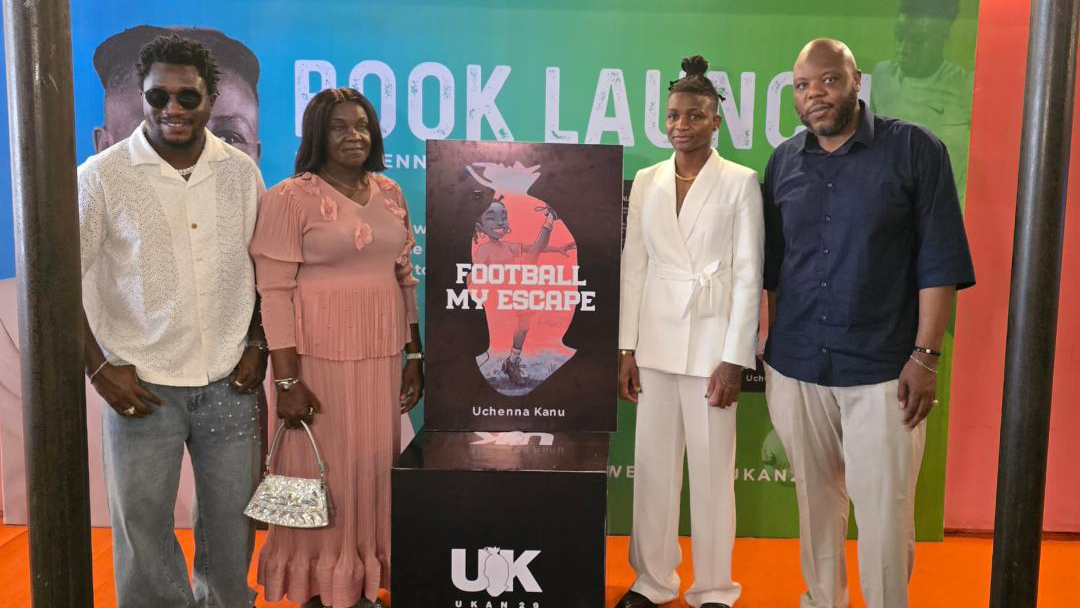
Nigerian art space is in buoyant mood despite the turbulent times. Against all odds, there’s quiet triumph in the art scene. Suffice it to say that the global economic downturn and domestic problems have not affected the arts narrative. Only last week, Enugu was bursting at the seams with youths who converged on the Coal City for the yearly Life In My City Art Festival (LIMCAF). This week, the leading International Art Fair in West Africa, ART X Lagos held.
Established in 2007 with a mission to position art for social development through youth empowerment, as well as, promoting art as a resource for national development, LIMCAF has grown to become the biggest creative event for the celebration of young artists in Nigeria.
In 17 years, LIMCAF is gradually inching to become, as the visioners projected, one of the top three sustainable high profile events in Africa within the international art events calendar.
From being bankrolled during its first four years by Chief Robert Orji’s advertising and printing firm, Rocana Nigeria Limited, the festival has come of age. It is now a yearly celebration of creativity featuring young talents in the Nigerian art landscape.
LIMCAF’s Journey
First held with a total of 180 entries, all coming to the then only Centre (Enugu), by 2022, total entries received in eight regional centres had come to 275 roughly representing the average totals for the previous 10 years.
Under the direction of Kevin Ejiofor and Dr. Ayo Adewunmi, the initiative has contributed to art education in the country through its yearly school children workshop, which engages young professionals and school children in creativity. It has also become something that has a huge potential and benefit for Nigeria and the Nigerian youth.
The event, no doubt, has become a response to how visual art can direct and change the fortune of the younger generation begging for direction and space to be human in the age of economic dislocation. Its role as a public space has also aided community development potential.
For Executive Director of the non-profit yearly competitive event, Ejiofor, “it encourages and empowers young Nigerian artists under the age of 35 years.”
According to him, “LIMCAF involves young people in a national interactive visual art discussion, which enables them to meaningfully express themselves on the state of their lived environment through their art and create a notable national and international art tournament destination in Enugu to complement other existing events and attractions in other parts of the country.”
LIMCAF Art Director, Adewunmi told The Guardian, “the idea is to keep sustaining their interest in art and also to fill the gap created by inadequate art teachers in secondary school.”
He said, “with the prizes that have been won, a number of the young people have used the platform to launch themselves into the limelight, either through being helped to finish their education to graduate levels, establishing their own businesses, as well as being encouraged to aim higher to win recognition in line here in Nigeria and beyond our shores.”
Adewunmi said the turnout of “members of the public is a signal that one of the objectives of the festival, which is to grow art appreciation and collection, thereby, empowering the young artists and growing art as a tool for socio-economic development is being achieved.”
2023 Feast
This year, exhibitions began in Ibadan on July 9 and ended with Owerri on August 15, 2023. A total of 576 artworks were on display in the 13 regional centres: They include Abeokuta, Abuja, Awka, Benin-Auchi, Enugu, Ibadan, Jalingo, Lagos, Ondo, Owerri, Port Harcourt, Uyo and Zaria.
The 2023 total of 576 is more than a 100 per cent increase over 2022. Of this number, 130 are females up from 68 in 2022. In all, 111 works were selected to feature in the grand finale that held at the Institute of Management and Technology’s Conference Centre, Enugu.
It also shows a remarkable increase in the number and success rate of female contestants this year most probably at least due in part to the new special categories of prizes for females.
Of the 130 total female entries this year, 29 females made it into the grand finale exhibition, which is 26.1 per cent, while 25 females or 25 per cent feature in the grand finale in 2022. Of special note are the two first ever entries from young artists living with challenge, for whom we have now created a special category prize beginning from this year.
This year’s final show began on Saturday, October 21, where an illustrious exhibition displayed the top 111 entries from various zones.
Earlier, LIMCAF 2023 Art Workshop for School Children and Art Teachers held from October 12 to 14 at the Alliance Française, Enugu, with 108 students from 12 Enugu urban schools participating. Exhibition of products from the children workshop opened on Tuesday, October 24, 2023 at the Alliance Française, Enugu, as part of the Festival Week.
This year, the first professionally trained Nigerian female curator, Amarachi Okafor, will join the long list of art scholars and professionals who help in various capacities to support the objectives of LIMCAF.
With a first degree in Painting, 2002; MFA (Sculpture), 2006 (both from University of Nigeria, Nsukka); she went on to earn an MA in Curatorial Practice, 2012 from Falmouth University, Cornwall, UK, in the process she got the art department’s internship scholarship upon graduation.
This year’s National Jury Panel was an assembly of art scholars, professionals, and studio practitioners including, two ladies, in various disciplines of visual art.
The Jury: A Collective Of Wisdom, Artistry
THE critical task of evaluating these exceptional works fell upon the shoulders of a distinguished seven-member jury, each a luminary in their respective fields. The panel, which had Ayo Aina as jury chairman, included Ato Arinze, Professor Nkemdilim Angela Udeani, Professor Etido Effiong William Inyang, Dr. Jacob Enemona Onoja, Dr. Sukanthy Visagapperumal-Egharevba and Otunba Oladotun Olatunbosun Alabi.
“These artworks were a testament to the artistic prowess that exists within our vibrant creative landscape. In a display that transcended boundaries, the festival showcased world-class standard art pieces in a broad range of disciplines, including painting, sculpture, mixed media, installation, video, graphics, textiles, ceramics, photography and digital art. These artworks were far from ‘normal’.
“They dared to break free from the shackles of conventionalism, each bearing a mark of exceptional quality. The sheer excellence of these entries made the jury’s task an arduous one. Out of this creative maelstrom, a total of 111 works were deemed worthy of recognition and awarded across various categories, however, only 25 awards were available from all the entries, making it really competitive and tasking to the jury,” said Jury chairman, Aina.
The works were judged according to stringent criteria: Thematic Expression: “We scrutinised how each work related to the 2023 theme, ‘Fix It’. The extent to which artists channelled this theme into their creations was a pivotal point in our deliberations,” Aina said.
On the creative use of materials, Arinze said: “We assessed how effectively they adhered to the principles of design, considering their materials as essential elements of their storytelling.”
Also on the quality of finish and presentation and how the artists paid close attention to the final presentation of their works, Udeani added: “We examined the quality of finish, which played a significant role in determining the excellence of each piece.”
Aina said, “the jury’s role was not one of ease; it was a challenging and thoughtful process. The exceptional quality of the artworks and the depth of thought embedded in each piece demanded a meticulous evaluation.”
Recommendations For The Future
In the light of their experience, the Jurors recommended the separation of awards within the visual arts, specifically differentiating between drawing and painting as distinct fields. The importance of this separation lies in acknowledging the unique skills and media employed by artists in these two categories. Drawing and painting differ significantly in terms of artistic medium, technical expertise, and artistic expression.
By creating separate categories, the jurors want to ensure that artists are acknowledged and rewarded for their mastery of each medium.
Furthermore, the panel proposed a merging of categories such as photography, video, digital arts, and graphics. These fields share common technological tools and contemporary themes, making their consolidation a practical step to reduce redundancy and streamline the judging process.
At the same time, the jurors recommended a need to preserve individual recognition for fields such as ceramics, textile, sculpture and installation. These categories possess their own unique principles, materials, and techniques, deserving of individual acknowledgment.
The exhibitions should have a future through careful planning to move the past exhibits in the collection of LIMCAF to major cities like Lagos, Abuja, Port Harcourt, and several other cities as may be desired.
Commending the festival, former Chief of Naval Staff, Admiral Alison Madueke, described it as the only pan-Nigeria competition in art dedicated to the promotion and advancement of the careers of young Nigerians. It enables contestants “to win handsome prizes, travel abroad and sell their works absolutely on merit – no questions asked about where you come from or what you believe in, in your private life,” he said. “I have also only recently learned that it exposes aspiring young artists to opportunities of interaction with senior practitioners and scholars in all the disciplines of art, enabling you to learn and grow and all this often with all expensed paid LIMCAF and its sponsors.”
While showing his excitement for the contestants, he urged them to keep the faith. “Many confusing things are going on now in Nigeria but here you have an example of how things can be and should be. Keep the faith and learn from what the Trustees and the Organising Committee of LIMCAF and the jury who do not care about anything in judging what you have offered except the quality of your work.”
Some of the winners include, Obidare Hezekiah, who won Justice Anthony Aniagolu Prize for Originality; Edward Samuel, Dr. Pius Okigbo Prize for Technical Proficiency; Usawaru Gift Esohe, Lawrence Agada Prize for Most Promising Artist; Ola Mercy, Felicia Okorafor Prize for Most Promising Female Artist; Owoade Aishat Oyetunde, Most Creative Female and Isa Musa, Special Award for Person With Disability.
For Best Painting/Mixed Media, Ijiko Kelvin, was winner, while Best Sculpture/Installation prize went to Maye Ekoja. The winner in Ceramics was Audu Philip Ikoroko and Adebayo Ebenezer (Graphics/Digital Art/ Photography/Video Art).
Other winners were Oryina Priscilla for Best Textile Art/Fashion and Ezichi Nkwocha got for Drawing, The overall winner this year was Ijiko Kelvin with Decayed Decades.
Ijiko, Ekoja,Ikoroko, Ebenezer, Priscilla and Nkwocha all will be sponsored for international travel courtesy of El Anatsui.
The festival was majorly supported by MTN and Ford foundations that believe what youths need is quality leadership that will give them encouragement like what LIMCAF is currently offering.






